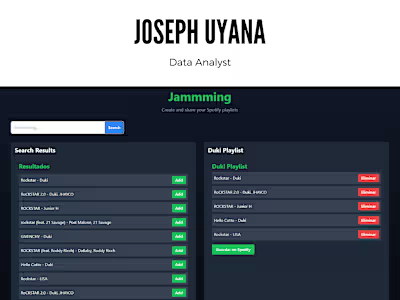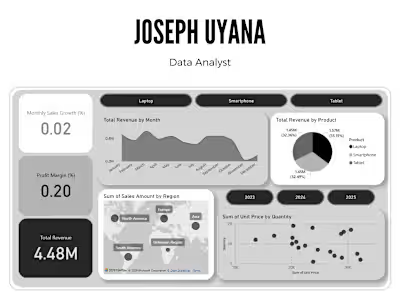Fraud Detection in Bank Transactions
Fraud Detection in Bank Transactions
Fraud detection is essential to protect financial institutions and their customers from significant losses. This project analyzes a dataset of 2,512 bank transactions containing 16 features to detect fraudulent activity using multiple machine learning techniques. By combining clustering methods with anomaly detection algorithms, we aim to build a robust system for flagging potentially fraudulent transactions.
Table of Contents
Introduction
This project focuses on detecting fraudulent transactions within a bank transaction dataset. The dataset includes 2,512 transactions with 16 features covering transaction details, customer information, and device/location data. Our goal is to analyze this dataset, identify anomalies, and build predictive models to flag potential fraud.
Basic Dataset Information
Before diving into modeling, we begin with an initial exploration to understand the dataset's structure:
Dataset Overview:
Use
df.info() to inspect data types and non-null counts.Summary Statistics:
Use
df.describe() to compute measures such as mean, median, and standard deviation for numerical features.Data Cleaning
Data cleaning ensures the reliability of our analysis. In this phase, we:
Handle Missing and Duplicated Values:
Identify and correct missing data and remove duplicate records.
Standardize Data Formats:
Convert dates and other fields to appropriate formats.
Detect Outliers:
Identify and treat outliers that may skew analysis.
Ensure Categorical Consistency:
Verify that categorical variables have consistent and valid entries.
Exploratory Data Analysis (EDA)
EDA helps uncover underlying patterns and relationships in the data:
Univariate Analysis:
Visualize individual features using histograms, boxplots, and density plots.
Bivariate Analysis:
Examine relationships between pairs of variables with scatterplots and correlation matrices.
Multivariate Analysis:
Explore complex interactions using pair plots and heatmaps.
Feature Engineering
Enhancing the dataset with engineered features can improve model performance. We focus on:
Time-Based Features:
TimeSinceLastTransaction: Time difference between consecutive transactions.
TransactionHour: Extracted hour from the transaction timestamp.
Transaction Frequency:
TransactionFrequency: Total transactions per account.
Device and IP Usage:
DeviceUsage and IPUsage: Usage patterns based on device IDs and IP addresses.
Merchant Preferences:
MerchantPreference: Count of transactions per account for each merchant.
Data Preprocessing
Preprocessing prepares the data for machine learning by ensuring consistency and scalability:
Categorical Encoding:
Convert categorical variables (e.g.,
TransactionType, Channel, CustomerOccupation) using mapping and one-hot encoding.Feature Selection & Scaling:
Select relevant features and apply standard scaling to normalize the data.
Clustering & Fraud Detection with K-Means
We use K-Means clustering to segment transactions and identify anomalies:
Elbow Method:
Determine the optimal number of clusters by evaluating inertia.
K-Means Clustering:
Cluster the preprocessed data and assign each transaction a cluster label.
Distance Calculation & Thresholding:
Compute distances from cluster centroids and flag transactions that exceed a defined threshold as potential fraud.
Visualization:
Display clusters, centroids, and flagged transactions through visual plots.
Clustering & Fraud Detection with DBSCAN
DBSCAN is used to detect anomalies based on density:
k-Distance Plot:
Determine an optimal epsilon value by analyzing the 5th nearest neighbor distances.
DBSCAN Clustering:
Cluster the scaled data and label noise points as potential fraud.
Dimensionality Reduction:
Use PCA to reduce data dimensions for visualization.
Visualization:
Highlight potential frauds with distinct markers in a unified dark-themed plot.
Fraud Detection with Isolation Forest
Isolation Forest isolates anomalies to detect potential fraud:
Model Training:
Train the Isolation Forest model on scaled data with a contamination rate of 2%.
Fraud Flagging:
Map predictions to 'Fraud' or 'Not Fraud' labels.
Dimensionality Reduction:
Apply PCA to reduce dimensions for visualization.
Visualization:
Plot normal transactions as borderless circles and fraud cases as red 'X' markers within a unified dark theme.
Outcome:
Display the count of transactions flagged as fraud by the model.
Fraud Detection Comparison Across Algorithms
This section compares the three fraud detection methods (K-Means, DBSCAN, and Isolation Forest):
Fraud Subset Extraction:
Isolate transactions flagged as fraudulent by each algorithm.
Fraud Count Calculation:
Compare the number of fraud cases detected by each method.
Intersection Analysis:
Identify common fraud cases among the different methods.
Visualization:
Use bar charts and other visual tools to compare the performance of the algorithms.
Setup Instructions
To run this project locally, follow these steps:
Clone the Repository:
Like this project
Posted Mar 20, 2025
Analysis of bank transaction data for fraud detection - Hayai12/fraud-detection-bank-transactions
Likes
0
Views
0
Timeline
Jan 31, 2025 - Feb 28, 2025
Featured on






